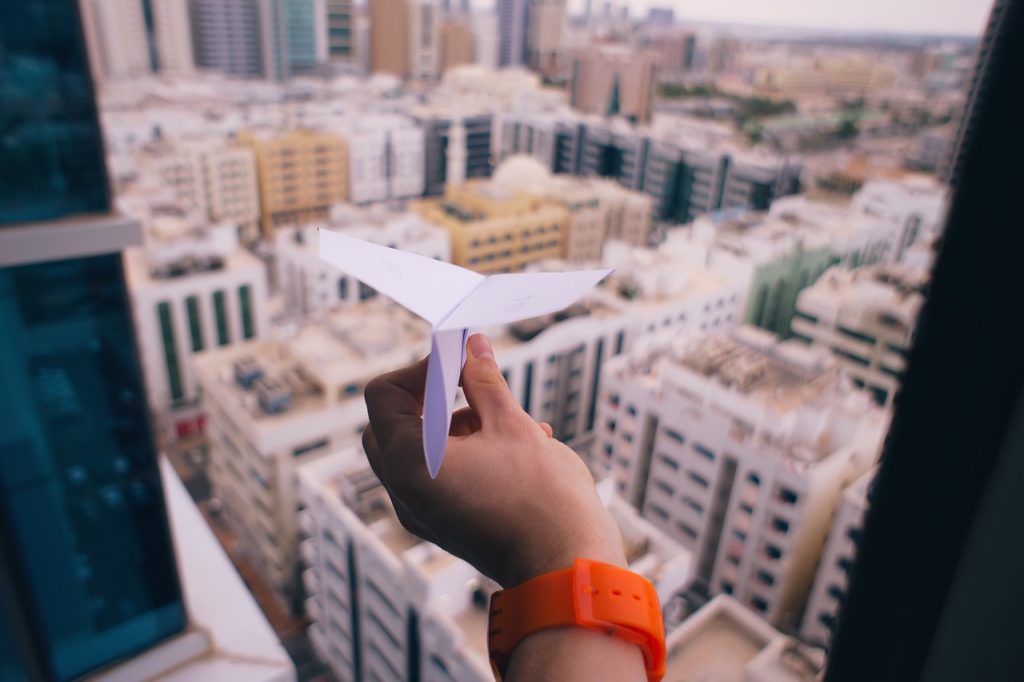
Paper planes have always been a fun activity for kids to play with for at least a hundred years. When kids fly a paper plane they are indirectly learning about the principles of flight. Fundamental aerodynamic principles such as lift, thrust, weight and drag are all different attributes used in the principles of flight. The flight principle known as drag is a very important part of the flying process. Children can experiment with paper planes to learn about drag and the role it plays with flying objects.
Materials
10 sheets of notebook paper or plane white copy paper are the only materials needed for this experiment. The extra paper is needed in case you mess up on a plane’s design you can have back up paper sheets to make more. You can also make different models.
Make Four Different Types of Paper Airplanes
To this start off this experiment you must make at least different types of paper planes. You can make your airplanes anyway that you like. However, there are four basic paper planes that will be recommended for this experiment. First, their is the classic dart which most kids make when they design a paper flying plane. Next, you must make a plane known as the buzz. This too is another common design for paper planes.
The heavy nosed plane is hard to make but it provides a different type of flying object. Finally, there is the sprinter styled paper plane. This particular model is all about distance and acrobatic maneuvers. If you are wondering about how to make any of these different types of planes, you can check out foldandfly.com to see how they are done.
Test Each Plane’s Drag to Figure out how this Principle Affects Them
Each plane has a different design which simply means that each plane has a different drag. Remember when an object is flying through the air it is thrusting. Air is moving over the top of the plane and under it as well. This air flow is called the thrust. It causes the plane to move through the air by giving it an upward lift force.
The drag on a plane is air pushing back against the flying object. This is what causes it to slow down to the point where it completely stops. An airplane uses fuel to thrust but if runs out of fuel the drag (and other natural forces) will cause it to come plummeting to the ground.
Fly the Four Different Types of Planes to Test this Experiment
You are now ready to fly your planes. Remember, you can make your planes anyway that you like. For the sake of this experiment we are going to use the ones that we have chosen for design. You can find a position within an open area and use it as a starting point. Take the dart airplane that you made and then fly it. Dart styled paper planes tend to travel at a far rate. They also generally move in a strait line because of their thin design. They have lest drag and therefore can cut through the air at a faster rate of speed.
Test the other types of planes. The buzz plane has a wider wingspan and it captures more air which allows it perform different types of maneuvers. This type of plane has more drag pushing against it. It captures more air because of its design.
Experiment with the other two remaining planes and figure out how they fly. You can then answer specific questions about this experiment.
How does the design of these planes affect their drag? What types of plane were the fastest ones to travel through the air and how did their drag impact their speed? What planes were more acrobatic and how did their drag effect their maneuverability? You should also evaluate a plane’s drag in terms of weight. Were some of the planes heavier than others even though the same paper weight was used for each unit was the same? Did some of your planes have an unbalanced design where the weight was unevenly distributed at one end of the craft?
These are basic questions about drag and how these elements impact a plane’s ability to fly and function through the air. Keep experimenting with different types of planes to figure out which type has the less drag.
